| Types of Twin Turbo Setups | ||
|---|---|---|
|
Nowhere on the web could I find a description of all the different types of twin turbo setups you could possibly make, so here is a list of all of them. There are three types of turbine setups used for twin turbo setups. These can be applied to any of the five types of compressor setups. This results in 15 possible types of twin turbo setups:
Here is a description of each of them. Parallel TurbinesCompound CompressorsLike a diesel compound setup, the LP (low pressure) turbo feeds air into the intake of the HP (high pressure) turbo, which makes compound boost. This setup would generally use two identical turbos so as to keep the same exhaust back pressure on all the engine cylinders. It will spool better then a parallel compressor setup and would be good for high boost, although max power is limited to what the secondary LP turbo can make. Used on some small diesel setups. 
Staged Compound CompressorsThis setup has never been done before and for good reason as it would result in one turbo being feed by half the cylinders and the other turbo being bypassed altogether, which would be a silly thing to do. Staged Sequential CompressorsThis setup has never been done before and for good reason as it would result in one turbo being feed by half the cylinders and the other turbo being bypassed altogether, which would be a silly thing to do. Parallel Sequential CompressorsThis setup has never been done before as it would have terrible spool and exhaust back pressure would be different on both turbines. Would only work properly once both turbos were running together at full boost like the parallel setup below. Parallel CompressorsParallel systems are a very common twin turbo setup They consist of two identical turbos being each feed by half of the engine cylinders. Slow to spool, but can make the combined power of both turbos. 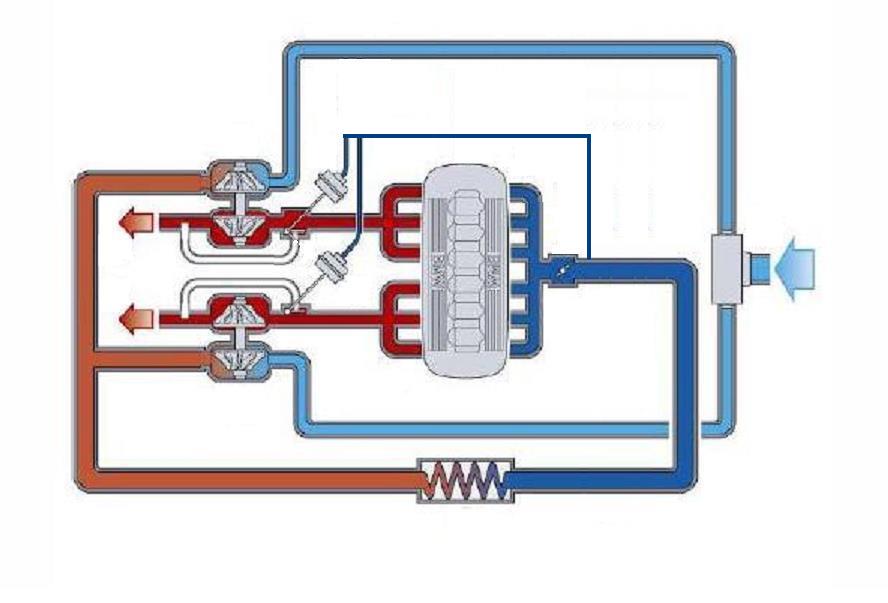
Sequential TurbinesCompound CompressorsThis setup has never been done before. It would involve having all the exhaust gas spooling the smaller HP turbo and then switching the exhaust gas to also feed the larger LP turbo. There is no reason why you cannot do this setup but it is a lot simplier to use parallel or series turbines for a compound setup, which is why everyone does those setups instead. Staged Compound CompressorsThis setup has never been done before. It would involve having all the exhaust gas spooling the smaller HP turbo and then switching most or all of the exhaust gas to feed the larger LP turbo instead. There is no reason why you cannot do this setup but it is a lot simplier to use series turbines for a staged compound compressor setup, which is why everyone does those setups instead. Staged Sequential CompressorsThis setup has never been done before. It would involve having all the exhaust gas spooling one smaller turbo and then switching all the exhaust gas to spooling another larger turbo. There is no reason why you cannot do this setup, but it is simplier to do most other setups instead to achieve the same spool and power goals. Parallel Sequential CompressorsThis is a common setup used by the Toyota Supra 2JZ-GTE, the Porsche 959, the FD3S Mazda RX-7 and the Subaru B4 sequential twin turbo engines. It initially sends all the exhaust gas to one turbo, which spools quickly. Exhaust gas is then slowly feed to the second turbo which then starts producing boost as well, so at full boost both turbos are contributing equally. This setup requires a complicated system of valves and controllers which has limited it usage. Quick to spool, and can make the combined power of both turbos. 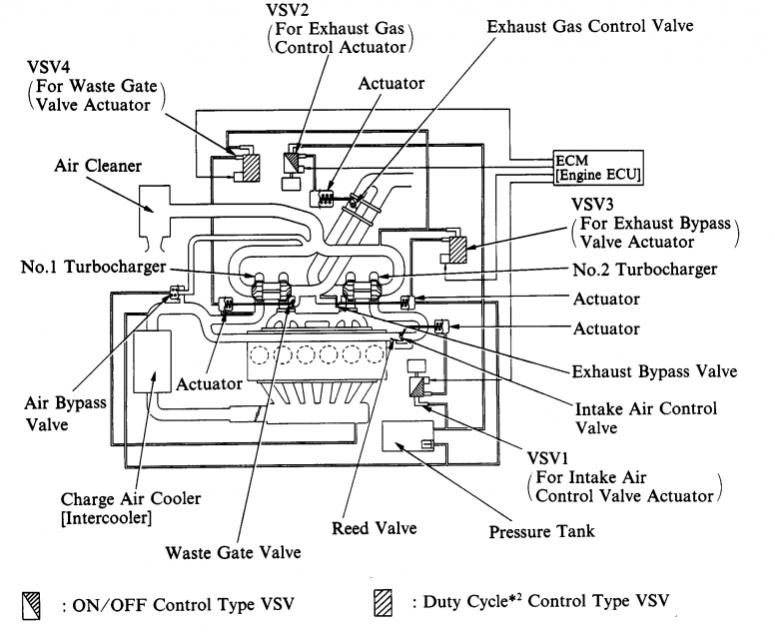
Parallel CompressorsThis setup has never been done before as it would have terrible spool. It would only work properly once both turbos were running together at full boost. Series TurbinesCompound CompressorsThis is a standard diesel compound setup, where the larger LP (low pressure) turbo feeds air into the intake of the smaller HP (high pressure) turbo, which makes compound boost. It will spools very well and is good for high boost, although max power is limited to what the secondary LP turbo can make. Used on most diesel twin turbo setups. 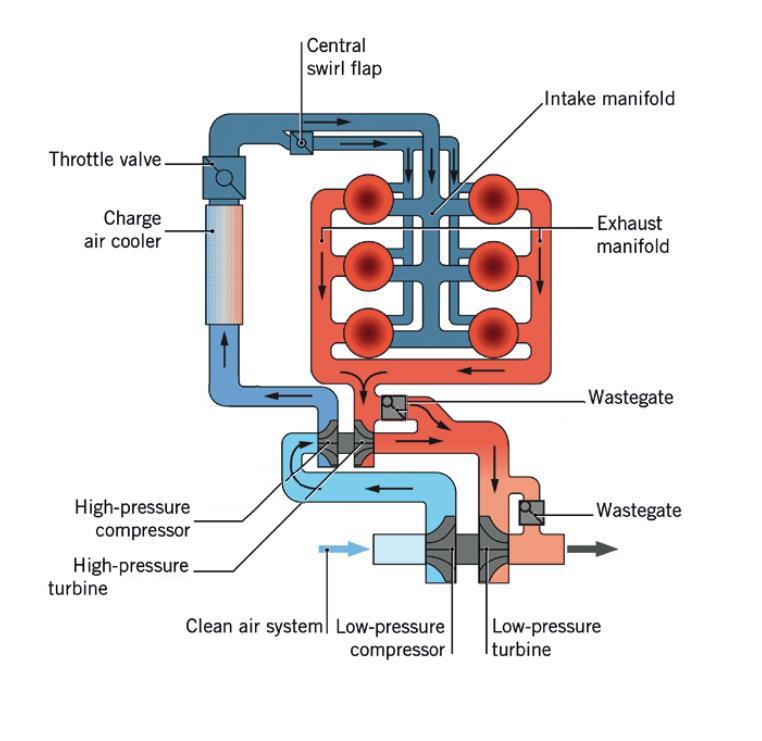
Staged Compound CompressorsThis setup is used on petrol engines as they cannot withstand the full compound effect at high boost levels. It works the same as a standard diesel compound setup but as the total boost pressure increases, exhaust flow to the HP turbo is reduced or eliminated altogether which limits the compound boost effect. I call this semi-compounding. It spools the HP (high pressure) primary turbo quickly and is good for high boost, although max power would be limited to what the large LP (low pressure) secondary turbo can make. Also used on some small diesel setups. 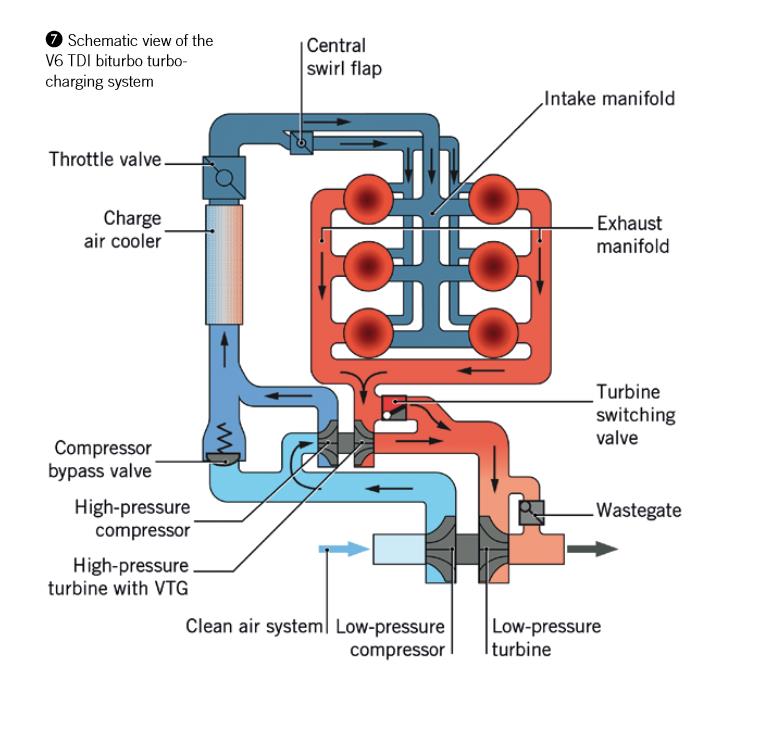
Staged Sequential CompressorsThis setup has never been done before. There is no reason why you cannot do this setup, but it is a lot simplier to make the staged compound compressor setup above which makes the same spool and max power, so everyone does that instead. It does limit you to the max power that the secondary turbo can make. Parallel Sequential CompressorsThis setup has never been done before, until now as this is the setup that I am currently building. It works by spooling the primary turbo first and then as exhaust flow increases it then spools the secondary turbo. Like all parallel sequential compressor setups, it requires a system of valves and controllers to manage when the flow from the secondary turbo joins that of the first turbo. It spools very well and makes the power of both turbos at full boost. The only drawback of this design is that the exhaust back pressure gets compounded just like any other compound turbo setup, so you need big free flowing turbines with a large AR. 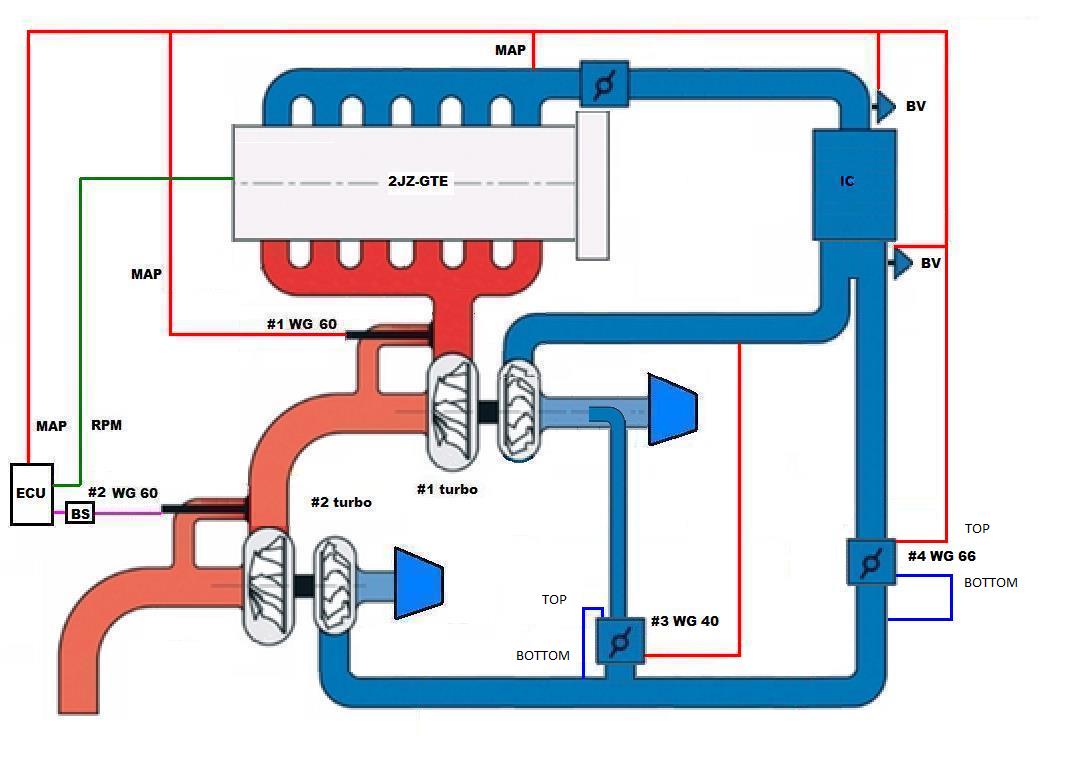
Parallel CompressorsThis setup has never been done before as it would have terrible spool. It would only work properly once both turbos were running together at full boost. SUMMARYSo the summary of these 15 possible types of twin turbo setups is:
| ||
Thanks for visiting mkiv.co.nz
Last modified on Friday 25th Arpil, 2014